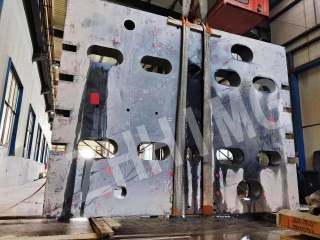Granite precision platform products are commonly used in various industries such as aerospace, automobile, and mold manufacturing. These platforms are known for their high precision and reliability which make it necessary to have a proper assembling, testing, and calibration process. This article outlines the steps to follow to assemble, test, and calibrate granite precision platform products.
1. Assembling
The first step in assembling granite precision platform products is to ensure that all components are in good condition. Check that all parts are present and check for any damage or defects. Ensure that all components are clean and free from dirt or dust.
Next, assemble the platform according to the manufacturer's instructions. Use only the recommended tools and follow the sequence of steps. Tighten bolts and screws according to the recommended torque settings and ensure that all parts are securely fitted.
2. Testing
Once the assembly is complete, it is important to test the platform for any defects or problems. Ensure that the platform is level and stable. Use a spirit level to check for levelness and adjust the platform accordingly. Inspect all components for any misalignment, looseness, or damage.
Check the platform's movement by moving it from side to side, front to back, and up and down. It is important to ensure that the platform moves smoothly without any jerking movements. If there are any jerking movements, this could indicate a problem with the platform's bearings.
3. Calibration
Calibration is an important step to ensure the platform produces accurate and reliable results. The calibration process involves adjusting the platform's measurements to a known standard. The calibration process varies depending on the type of platform.
To calibrate a granite precision platform, start by selecting the calibration standard. This can be a gauge block, a coordinate measuring machine, or any other standard equipment. Ensure that the calibration standard is clean and free from dirt or dust.
Next, attach the standard to the platform and take measurements. Compare the measurements to the known standard and adjust the platform's measurements accordingly. Repeat the calibration process until the platform produces accurate and reliable measurements.
In conclusion, assembling, testing, and calibrating granite precision platform products is a critical process that requires attention to detail and precision. By following the steps outlined above, you can ensure that your granite precision platform operates reliably, producing accurate and consistent results.
Post time: Jan-29-2024

